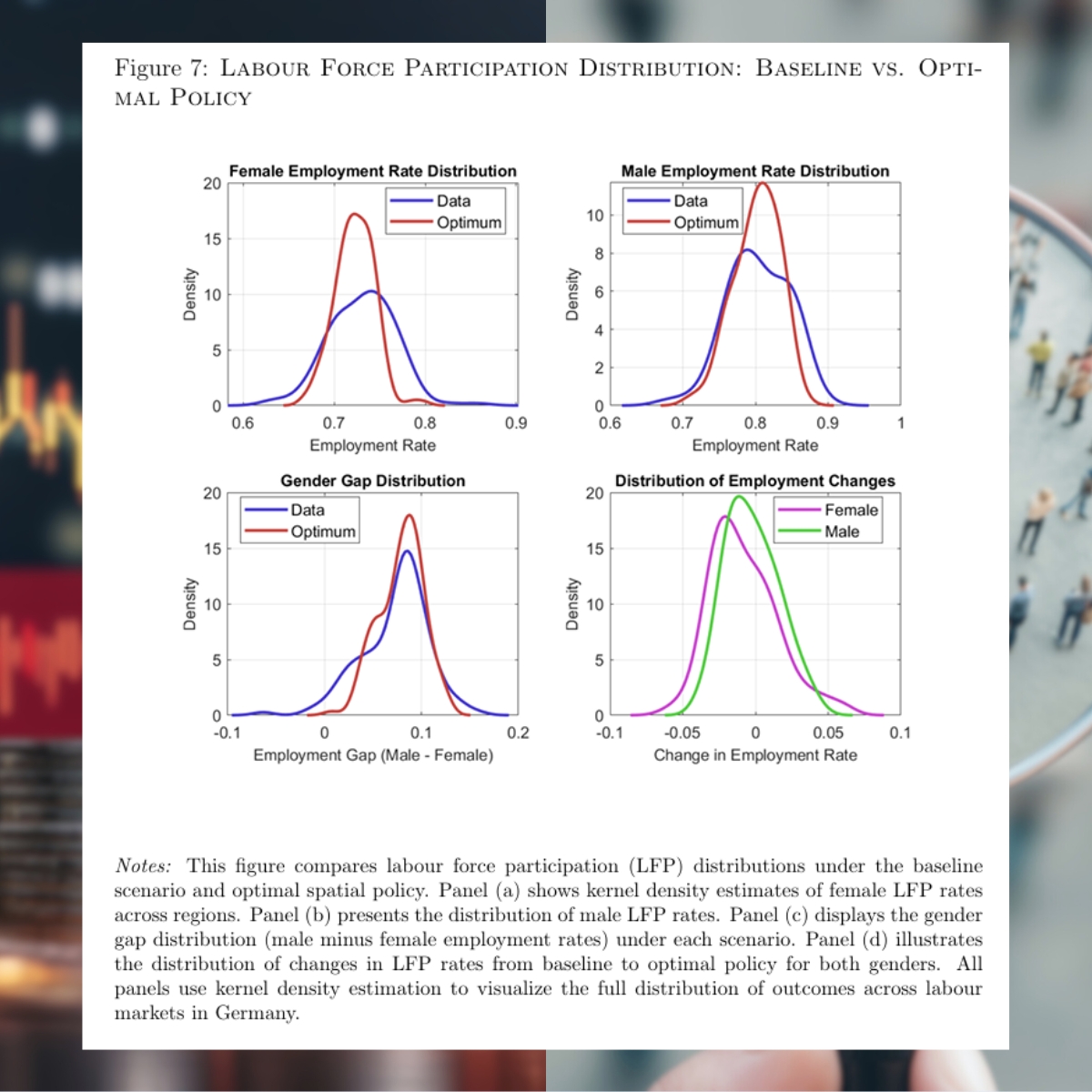

In Germany, like in many ageing societies, maintaining economic productivity as the working-age population declines is a growing challenge. In turn, governments often invest in accessible childcare or public transportation to make it easier to search for or take up work - especially for workers currently underrepresented in the labour force. However, a central issue remains: not every population group and in all places reacts the same way to such policies. Showing how these different responses impact the efficiency of said investments is the central focus of the paper “Spatial Policies and Heterogeneous Employment Responses” by Fabian Bald and Marcel Henkel.
This research explores how spatial policies can help improve employment, especially for groups that face more challenges in joining the workforce, like women. Spatial policies refer to targeted public investments or fiscal transfers into specific regions. The authors argue that these policies do more than move money around—they can remove obstacles that stop people from working, such as the lack of childcare or transportation, if the money is invested into these public goods or services. This holds especially true in places with potentially high labour supply gains but little money to finance said investments.
To study this research question, the authors focus on Germany, a country with substantial differences in economic conditions between regions. Germany also has a transfer system where wealthier regions help fund public services in poorer locations. The researchers noticed that women are less likely to be employed in big, high-wage cities, but in some poorer, rural areas, women and men work at almost the same rate. They wanted to understand why this is the case and how spatial policies can influence these differences.
They used a model that includes two main ideas: First, people decide where to live based on how attractive a place is (including wages, public services like childcare, and how easy it is to get a job there). Second, people face personal and local barriers to joining the workforce. For example, some women might decide not to work if childcare is expensive or unavailable. The model also considers how both the local decision of workers to join the labour force and targeted funds from different places finance public services – and how effective they are in decreasing these local barriers.
Looking at data from Germany, the authors find that when regions receive more financial support from the government, employment goes up, especially for women. This effect is stronger in areas where there are fewer childcare options. Even a small increase in public funding can help more women join the workforce in these places. The study shows that it is not enough to send money to the poorest places when designing these financial transfers. Instead, governments should also consider those areas where it will lead to the largest employment increase.
The authors argue that current place-based policies often overlook this potential. Instead of focusing solely on poor or low-wage regions, they propose targeting areas where people are more likely to respond positively to improved public services—in other words, where a small push could lead to a big change in employment. This could mean directing resources not just to struggling regions but also to places with high labour supply elasticity, where many people, especially women, would work if conditions were slightly better.
In summary, the paper challenges a one-size-fits-all approach to regional policy. It shows that targeted public investment can indeed increase employment, but the effects differ based on who lives in a place and what they need to be able to work. Policies that take these differences seriously—especially those that aim to reduce gender gaps and remove structural barriers—can help make labour markets more inclusive and effective. These insights are especially relevant for governments dealing with ageing populations and economic inequality.
Their model predicts that changing how money is distributed between places could increase Germany's overall economic output by over 2% and improve workers' well-being by nearly 3%. Most of these gains would come from getting more women into the workforce, especially in the largest and most productive German cities.
On the authors
Fabian Bald
Tenure-track Junior Professor (Assistant Professor) for Regional and Urban Economics at the European University Viadrina and Research Associate at the Berlin School of Economics. His research focuses on topics in Regional and Urban Economics, including internal migration, quality of life, public fiscal policy, and regional labour markets.
Marcel Henkel
Advanced Post-Doctoral Researcher and Lecturer in the Department of Economics and the Center for Regional Economic Development (CRED) at the University of Bern. His research explores topics at the intersection of regional and urban economics, public economics, international economics, macroeconomics, and political economy, focusing on how geography, institutions, and policies shape economic outcomes.